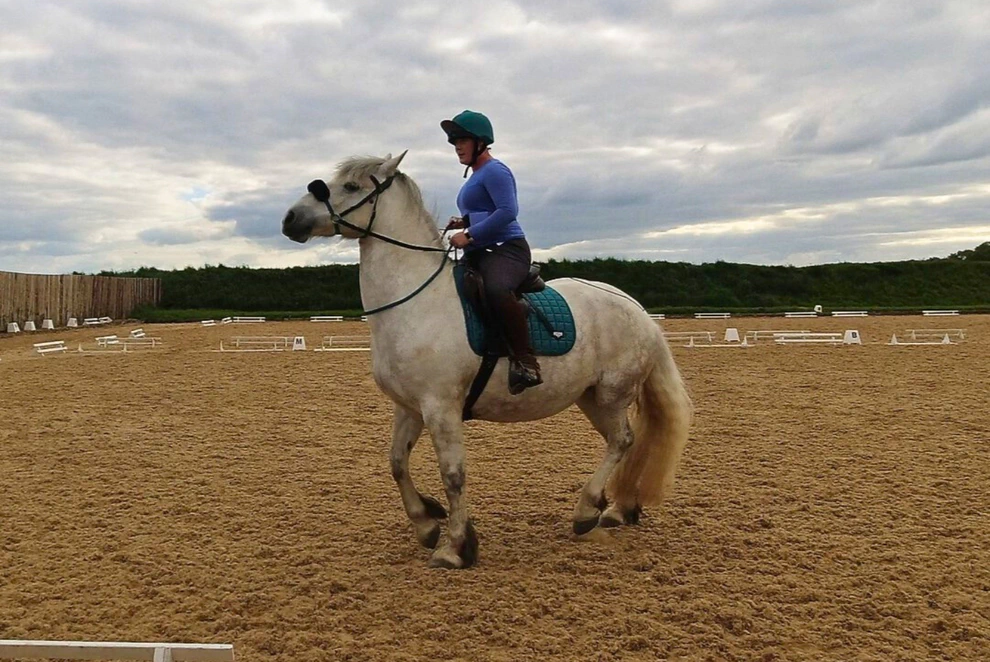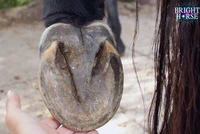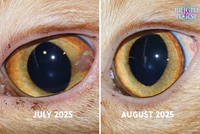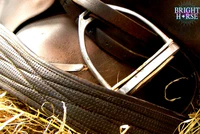Why ‘Kick On and Carry On’ is Dead
Kick on and carry on. It’s like a badge worn with honour. A mark of toughness, right? It’s also called ‘Braver’. And for some situations it’s important, but in reality, it fails every psychological test for learning and growing.
It doesn’t work, at least not in the way you think. Don’t worry I will explain why it fails to meet learning and improving your riding.
‘Kick on and Carry on’ relies on bravery, and bravery means doing something even when you’re scared. But.. but and this is important; it doesn’t resolve the fear.
Bravery doesn’t change your relationship with anxiety. I promise you it doesn’t. Let’s take a fire fighter, are you ever not going to be scared about running into a burning building? Fuck no! Because fear keeps you safe, it’s a dangerous situation, but you do it anyway. You never stop thinking of the danger.
Now tell me, why on earth would we want bravery in horse riding? A hobby? A joy? You won’t, riding or spending time with your horse is not running into a burning building. Bravery means that thing will always be dangerous, alsways be scary, always mean a risk to health and welfare. I don’t know about you, but my goal is not to feel that way with my horse.
You can be brave and still be stuck in the same cycle of fear. You can push through, grip harder, ride it out, but learning doesn’t happen in that state. Learning how to be safer and enjoy your horse, does not happen with bravery.
If you’ve ever found yourself sitting on a horse with your heart in your throat, oh yea I’ve have been there and it was not fun. I’ve felt like I couldn’t breathe. My lungs actually hurt afterwards from how hard I was breathing through each buck, how much adrenaline was flooding my system. My brain and body just wouldn’t communicate. And that’s when I realised this phrase kick on and carry on isn’t just unhelpful. It’s dangerous. Not just for me, but the horse I loved. We don’t need to ride into battle to save our friends and family, so why on earth am I doing this?!
Riding a horse, at it’s heart is a technical, nuanced partnership between horse and human. Our horses rely on the subtlety and precision of our bodies to communicate. And when we’re afraid, when our bodies disconnect, stiffen, or freeze, we aren’t just letting ourselves down we’re failing our horses, too.
So for me, ‘Kick On and Carry On’ just needs to die.
I’ve spent years working with horses that have been labelled dangerous and difficult horses that buck, rear, bolt, or freeze. Horses that have broken people’s bones, put me and other in the hospital. Horses others are too scared to get near them. I can walk into those situations with confidence. I don’t feel fear there, because I know what to do, how to read the horse, how to keep us both safe. This is because my goal is not to ‘Kick On and Carry On’, but to calm things down.
“Go Quite and progress”
This blog isn’t about pushing through. It’s about honesty. It’s about showing up for your horse. It’s about understanding the psychology behind our fear and using real tools to work with it, not against it. It’s about rebuilding trust in ourselves and in our horses one small, solid step at a time.
The Psychology Behind the Fear
Fear is not weakness. Let’s just get that straight, okay? It’s biology. It’s your nervous system. And when it’s firing up, it’s doing its job and it’s doing it really fucking well.
When you feel fear around horses, especially after an injury, or a long time out of the saddle, it’s not irrational. Even if you haven’t had a dramatic fall or a rehab story, it still makes sense. Because your brain’s job is survival.
Enter the amygdala: the part of your brain that keeps you alive. And it doesn’t give a single shit how many years you’ve been riding, how many letters you have after your name, or how many people tell you your horse looks great.
It doesn’t care about kicking on
What it remembers is what you felt. It remembers the tension. The panic. The moment everything went still and something went wrong. It tags that memory as danger, and it files it deep.
So the next time you swing your leg over, even if everything is “fine” your body might not agree. You might tense up. Your breathing might change. Your gut might clench. Your brain starts whispering, or maybe shouting.
And then you start to wonder: what the hell is wrong with me?
Let me say this loud and clear for the people in the back
Nothing is wrong with you.
In fact, what’s happening is proof that your biology works really well. Your nervous system is reacting to a perceived threat, based on a lived experience, a very valid one btw. It’s not responding to what’s happening now. It’s responding to what happened then. To the memory. To the odd canter, to the lameness, to your fall. To the vet’s face when they saw the xrays.
It’s reacting to outdated information. But That doesn’t change the emotion you feel, that is real.
This is when it gets a bit complicated, because horses feel everything. We’ve trained them to respond to the tiniest cues, a shift in our seat, the softness or tension in our hands, a breath held too long, a leg pressed too tight. So when we get tense, they go: Where’s the fire? 🔥
It’s not about obedience, it’s not about disobedience. It’s about communication, consistency, and uncertainty. And yeah, the word partnership when it’s thrown around like a buzzword. But here? It applies. Because riding is about relationship. And that relationship gets messy when fear enters the room, because you can’t have fear without love.
And when they spook, or flinch, or feel different under us, our mind can spiral: they’re injured again, I missed something, this isn’t right. We stress. They feel it. The spiral tightens.
It’s not about fitness or about your technical skill. You can build that up with time, walks, groundwork. This is about emotional regulation and our ability to stay present, feel safe, and send clear, honest signals to our horse. And that doesn’t come from forcing it, it comes from rebuilding trust in our selves and new information.
Trust in your horse, yes, but more than that, trust in yourself. Trust that you’ve done the work. That you know your horse and you can navigate this. That you are allowed to feel afraid and still make progress.
And this is the part I really want you to take in: This kind of fear? It makes sense. It’s not a flaw in your character. It’s not proof that you’re failing. It’s your mind and body trying to protect you using outdated information.
That’s what it is -> Outdated information.
The solution isn’t to ignore it. The solution is to update it.
Bit by bit, ride by ride, breath by breath, you teach your nervous system that things are okay again. You build new evidence. You give your brain something else to believe in. And that’s how confidence grows not through willpower or bravado, but through gentle, consistent updates to the story your body’s been carrying for too long.
PET: Person, Environment, Task
This is where we stop talking about the past and start talking about the future. Because now? Psychology to the rescue 😏
If you’re like me, you’ve probably had those nights where you’re lying in bed dreaming about that glorious canter across the stubble fields, or through your favourite loop. In your mind, you’ve got it all lined up. Tomorrow’s the day, you are going to do the whole field. Trot the long sides, stay out for an hour and it’s going to be magic.
Then morning comes. You get to the yard. You tack up. You get on…
And suddenly, your horse feels like a coiled spring underneath you. Your chest tightens, your body freezes. That feeling creeps in… oh I can’t do this today… I’m such a waste of space… And then the guilt kicks in. It’s that horrible shame monster, the voice in your head says: Why can’t I just get over this? there must be something wrong with me. Once again I say….
Nothing is wrong with you.
Let me tell you why it is happening, you’re using outdated information, because your body wants to use information it has already stored in the memory banks. Your body is responding to memories (body also equals brain), but not reality. It’s still holding onto what happened, or what nearly happened, and it hasn’t been updated with the fact that right now, today, you’re actually okay.
So, how do we rebuild that? How do we update the system?
That’s where my PET acronym comes in, easy to remember cos petting is a nice comfort.
It stands for: Person. Environment. Task.
This is how I use PET:
💁🏼♀️ Person: You’re the person. The familiar, grounding presence your horse knows.
🌍Environment: The place you want to ride in something familiar, safe, full of positive associations.
🐴Task: What do you want your horse to do? A walk, a loose rein, a trot, a canter it doesn’t matter. Pick one. Keep it clear.
It’s a simple, clear, and effective way to train our horses and rebuild our own confidence one variable at a time so we set ourselves up to succeed.
This is how I build confidence for myself.
Person: I start on the ground. Really simple. I’m a familiar person. I know my horse. I enjoy walking with her we’ve done it hundreds of times. No pressure. No saddle. Just head out and move.
Environment: We stick to a route we both know well. Often, it’s a path I’d like to ride later. Sometimes we do it at liberty. I make it fun, relaxed, full of treats and praise. Something positive.
Task: We just walk. No expectations. No performance. Just us, out in the world. And at the end of it? I feel good. Because I showed up. I did something with my horse. That’s the key.
Just show up and do one thing. We don’t change anything too drastically at the beginning. We just create a good day.
Did I trot? No. Did I do something “impressive”? No. Does it matter? Absolutely not.
What matters is that I showed up, I did something with my horse, and we both walked away feeling okay. Then slowly, as that becomes normal, I start to shift one variable. Maybe I ride. Maybe I ride with someone walking alongside. Maybe I ride alone.
Each tiny step is a vote of confidence for your nervous system. It teaches your brain and your horse that things are okay again.
This isn’t about being brave. It’s about being smart. Bravery without a plan is chaos. But structure? Structure is safety.




